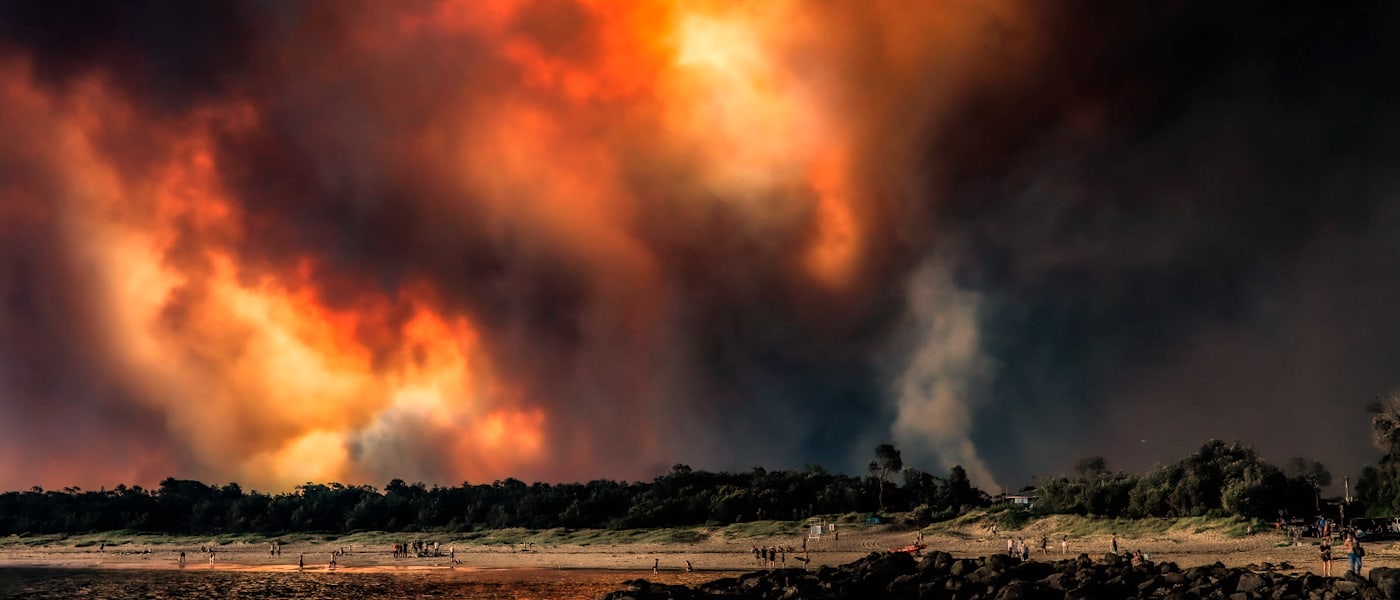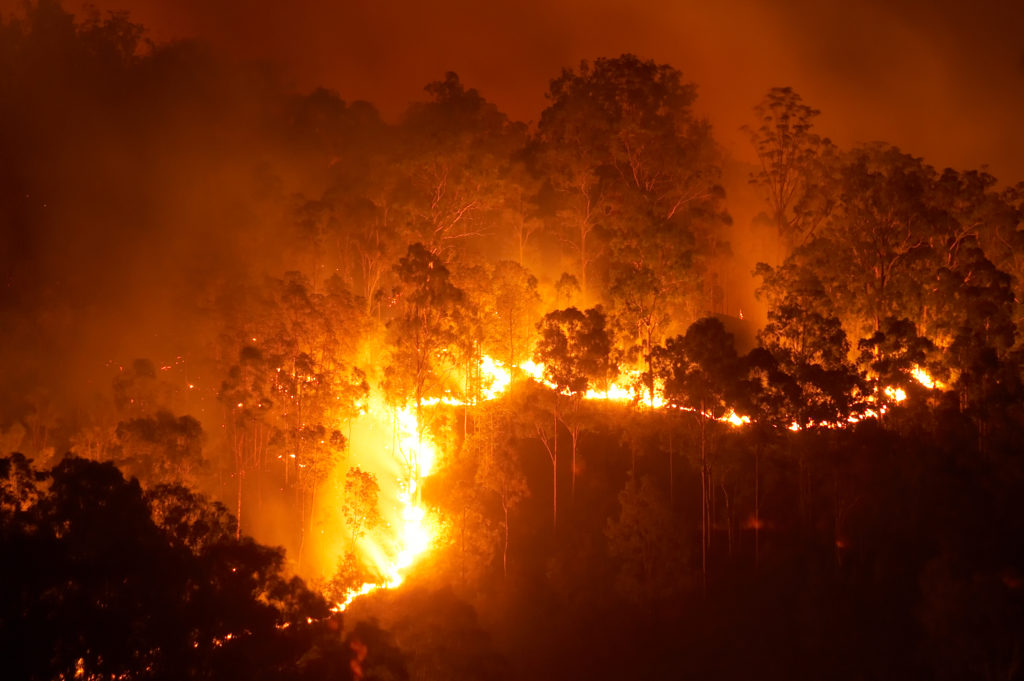The Relevance of Bushfire Management in Fire Security
In the world of fire protection, the significance of efficient bushfire administration can not be understated. As communities around the world come to grips with boosting circumstances of wildfires, the aggressive method to avoid and alleviating these all-natural calamities with calculated bushfire monitoring methods has emerged as a crucial aspect. Past the instant risk to human life and residential or commercial property, the interaction in between bushfire monitoring and ecological conservation, area participation, and environment change presents complicated difficulties that demand extensive options.
Importance of Proactive Bushfire Prevention
Positive bushfire prevention approaches are vital in minimizing the ravaging impacts of wildfires on neighborhoods and ecosystems. By taking preventative actions prior to a bushfire happens, the threats related to these natural catastrophes can be considerably decreased. One essential element of aggressive bushfire avoidance is fuel administration. This entails reducing the amount of combustible product, such as dead greenery and dry fallen leaves, that can work as gas for fires. Gas management techniques include prescribed burns, where controlled fires are purposely lit to minimize the build-up of combustible product.
Educating the public on fire safety practices and promoting area understanding about the relevance of bushfire avoidance are vital parts of positive techniques. Ultimately, aggressive bushfire avoidance plays a considerable role in guarding neighborhoods and ecosystems from the harmful influences of wildfires.
Duty of Area Engagement in Fire Defense
Engaging the community in fire security initiatives is indispensable to enhancing the performance of aggressive bushfire prevention approaches. Community interaction plays an important function in promoting a collective understanding of the dangers posed by bushfires and the importance of readiness procedures. By involving regional residents, authorities can share crucial details ablaze safety practices, emptying treatments, and early caution systems, equipping people to take proactive actions to protect their buildings and lives.
Moreover, neighborhood involvement initiatives assist construct strength within neighborhoods, fostering a feeling of unity and shared responsibility in mitigating fire risks. With workshops, training sessions, and area events, homeowners can learn exactly how to produce defensible rooms around their homes, lower fire fuel loads, and determine prospective dangers. By cultivating a society of readiness and partnership, areas can reinforce their ability to respond efficiently to bushfire emergencies, decreasing the influence on lives and residential properties. Ultimately, community engagement is a cornerstone of comprehensive fire protection techniques, highlighting the significance of collective action in protecting at risk locations from the danger of bushfires.
Relevance of Wild Animals Conservation in Bushfire Management
Conservation of wildlife plays an important role in reliable bushfire administration strategies, making sure the protection of varied environments and biodiversity in fire-prone regions. Wildlife preservation is essential as it adds to the total resilience of ecological communities, helping in their capacity to endure and recoup from the impact of bushfires. By saving environments and safeguarding numerous types, the all-natural balance within these environments is maintained, which is necessary for their long-lasting health and sustainability.
Additionally, wildlife preservation likewise assists in lowering the risk and strength of bushfires. Healthy and balanced communities with well-preserved wild animals populaces can work as natural firebreaks, slowing down the spread of fires and restricting their harmful possibility (BAL Assessment). Certain animal types, like delving pets or birds that spread out seeds, play unique functions in assisting or stopping fires in the post-fire regrowth of environments
Including wild animals conservation into bushfire administration techniques is not only vital for protecting biodiversity but likewise for advertising the overall health and wellness and durability of ecosystems in the face of enhancing fire risks.
Benefits of Strategic Gas Decrease Programs
Purposefully executing gas reduction programs is necessary in mitigating the threat and effect of bushfires in fire-prone areas. These programs include controlled burning, mechanical clearing up, and various other methods to minimize the amount of flammable plant life offered to fuel wildfires. By purposefully decreasing fuel lots in essential locations, such as close to household areas or essential facilities, the intensity and spread of bushfires can be significantly lowered.
One of the key benefits of fuel decrease programs is the enhancement of general fire strength in an environment. By creating critical fuel breaks and minimizing the connection of plants, these programs help to interrupt the course of a bushfire, making it much easier for firefighters to include and snuff visit homepage out the blaze. Furthermore, gas reduction programs can safeguard biodiversity by preventing exceedingly intense fires that can ravage habitats and threaten wildlife populaces.
Additionally, these programs can additionally protect human lives and property by decreasing the risk of disastrous fires that posture a considerable threat to areas. Inevitably, strategic gas decrease programs play a crucial function in positive bushfire monitoring and promoting a much safer setting for both people and nature.
Effect of Climate Modification on Bushfire Threat

Greater temperatures lead to drier vegetation, making it a lot more prone to ignition. Reduced rains in particular regions lengthens drought problems, even more increasing the flammability of the landscape. Additionally, the transforming climate has actually altered wind patterns and climatic problems, leading to even more erratic fire behavior and quick fire spread.
As the environment continues to alter, the regularity and intensity of bushfires are anticipated to rise, demanding a aggressive and flexible approach to bushfire monitoring. Methods need to evolve to account for the transforming risk landscape, integrating environment projections and thinking about long-lasting resilience in fire management preparation. Addressing the impact of climate adjustment on bushfire threat is essential in establishing efficient methods to protect lives, residential or commercial property, and the environment.
Final Thought
Finally, aggressive bushfire avoidance, neighborhood engagement, wildlife preservation, tactical fuel decrease programs, and factor to consider of environment change are essential components in effective fire protection. By implementing these techniques, we can much better handle bushfire risks and protect both human lives and the environment. BAL Assessment. It is critical Source that stakeholders work with each other to focus on these steps to minimize the terrible impact of bushfires on ecosystems and communities

As the climate continues to transform, the regularity and intensity of bushfires are expected to rise, requiring a adaptive and positive strategy to bushfire administration.In final thought, proactive bushfire avoidance, area interaction, wild animals conservation, calculated fuel decrease programs, and consideration of environment adjustment are crucial elements in effective fire protection.